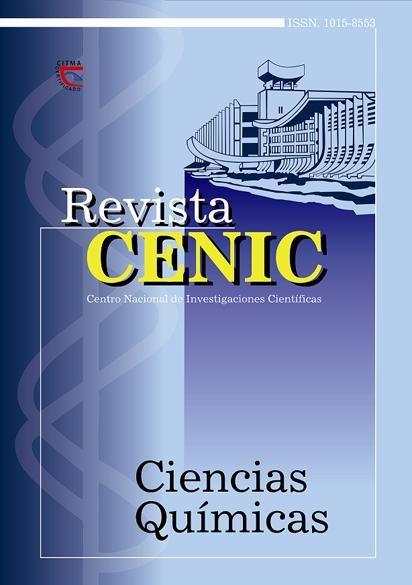Characterization of volatiles in Loquat fruit (Eriobotrya japonica Lindl.)
Abstract
Among the many attractive and desirable attributes that create demand for fruits from the tropics and subtropics, their characteristic
flavor is the most noticeable to consumers . In addition, these fruits are often inexpensive, are extremely rich in vitamins, and can be used in a wide range of products including beverages, desserts, and diary products. Loquat is the fruit of Eriobotrya japonica Lindl., a small evergreen tree native to Japan and actually grown there as well as in various other tropical and subtropical countries . The purpose of this study is to isolate and identify volatile components in loquat fruit grown in Cuba. Volatile components were isolated from loquat fruit by simultaneous steam distillation/solvent extraction according to Likens-Nickerson and analyzed by GC and GC-MS. Among 140 constituents separated, 128 were identified . A rough survey of the chemical classes represented in the loquat
flavor was as follows: Acids comprise the largest class of volatiles (57.4 %); the composition of the other classes of compounds was as follows: aldehydes and ketones, 13 .7 %; parafines, 10.6 %; alcohols, 5 .5 % ; terpenoids, 5 .2 %; esters, 2.7 % and others, 4 .9 %. Hexadecanoic acid, octadecanoic acid, decane, benzaldehyde and nonanal were found to be the major constituents . The
highly amounts of fatty acids was thought to contribute to the unique flavor of this fruit.

Downloads
Published
How to Cite
Issue
Section
License
Copyright (c) 2002 Copyright (c) 2002 Revista CENIC Ciencias Químicas

This work is licensed under a Creative Commons Attribution-NonCommercial-ShareAlike 4.0 International License.
Los autores que publican en esta revista están de acuerdo con los siguientes términos:
Los autores conservan los derechos de autor y garantizan a la revista el derecho de ser la primera publicación del trabajo al igual que licenciado bajo una Creative Commons Atribución-NoComercial-CompartirIgual 4.0 que permite a otros compartir el trabajo con un reconocimiento de la autoría del trabajo y la publicación inicial en esta revista.
Los autores pueden establecer por separado acuerdos adicionales para la distribución no exclusiva de la versión de la obra publicada en la revista (por ejemplo, situarlo en un repositorio institucional o publicarlo en un libro), con un reconocimiento de su publicación inicial en esta revista.
Se permite y se anima a los autores a difundir sus trabajos electrónicamente (por ejemplo, en repositorios institucionales o en su propio sitio web) antes y durante el proceso de envío, ya que puede dar lugar a intercambios productivos, así como a una citación más temprana y mayor de los trabajos publicados (Véase The Effect of Open Access) (en inglés).













